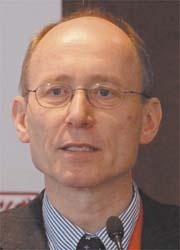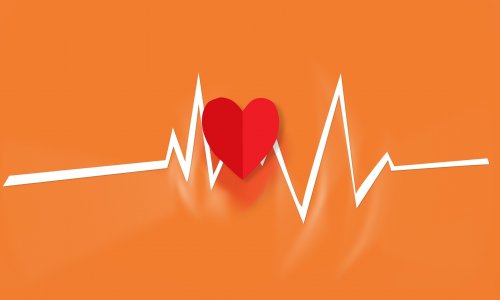Myocardial infarction
The first minutes following reperfusion are decisive
In his lecture Focus on new therapy strategies for heart attacks, Prof. Hans Michael Piper, President of this year's Congress of the German Cardiac Society, gave some fascinating insights in to therapeutic measures after heart attacks.

It is possible to significantly limit the loss of cardiac tissue after an acute myocardial infarction with the help of a balloon catheter. Restoring the blood supply of the heart muscle paves the way for cell recovery from the acute infarction.
Recent experimental research has shown how important these first minutes after a reperfusion really are: Reperfusion can make cell damage within the undersupplied heart tissue irreversible, which scientists refer to as ‘reperfusion damage’.
‘There have already been successful, clinical tests with an experimentally developed procedure for the interruption of reperfusion damage where ANP (atrial natriuretic peptide), a hormone naturally produced by the body, is injected. In a further procedure, a series of short, renewed vascular occlusions immediately after the beginning of perfusion have a protective effect on the cardiac tissue,’ Prof. Piper explained. After the opening of a previously occluded cardiac vessel, therapy revolves around the importance of keeping it open. Renewed thrombotic occlusion is prevented through inhibiting the clotting. The insertion of stents is then aimed at long-term prevention of new cardiac vasoconstriction.
Further processes in a partly damaged, partly saved and partly healthy heart are then characterised by ‘remodelling’. The heart – although circulation has been restored – changes its structure and cell function, which can possibly lead to heart insufficiency. The therapy now required, such as ACE inhibitors, can positively impact the remodelling process and delay the onset of heart insufficiency. However, the objective is to determine the causes of this tissue remodelling to improve therapeutic measures.
‘A further important field for therapy after heart attacks is stem cell therapy which aims to regenerate the heart tissue damaged during the acute infarction. Although there have been first reports of the success with different cell types in experimental studies only few have been clinically examined. We will have to invest a lot of energy into the search for the right procedure here,’ Prof. Piper concluded.
30.04.2008











